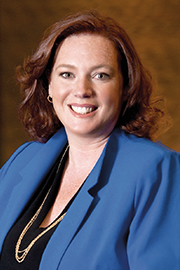- Mar/27/23 9:20:00 a.m.
- Re: Bill 85
Thank you, Madam Speaker, and thank you very much to the minister for your outstanding remarks this morning and your outstanding work on behalf of the people of Ontario.
Today, I rise to speak as part of the second reading of the Building a Strong Ontario Act (Budget Measures), a crucial part of our government’s plan to navigate these uncertain times and support people and businesses. As we heard from the minister, Ontario is continuing to attract and protect investments and jobs as part of our plan to build Ontario’s economy. And key to Ontario’s future economic growth and jobs is unlocking northern Ontario’s potential, particularly in the mining and critical minerals sector.
Speaker, our government’s fantastic Minister of Mines is working to incentivize and encourage exploration by providing an additional $3 million to the Ontario Junior Exploration Program this year and next year. Our government will also be reopening the Mining Act and undertaking an end-to-end review. This is so we can ensure that the act reflects the realities of today, including a non-negotiable commitment to safety and environmental stewardship, while also ensuring that we have a truly competitive jurisdiction and market to attract future investment in our mineral sector.
Our approach to unlocking these opportunities can be found in Ontario’s Critical Minerals Strategy. Right here in Ontario, we have the minerals needed to manufacture clean technology like electric vehicles. Our critical minerals strategy is Ontario’s road map to secure our position as a reliable global supplier and processor of responsibly sourced critical minerals.
There are six pillars of the strategy: Enhancing geoscience information and supporting critical minerals exploration; growing domestic processing and creating resilient local supply chains; improving Ontario’s regulatory framework; investing in critical minerals innovation, research and development; building economic development opportunities with Indigenous partners; and growing the labour supply and developing a skilled labour force.
But of course, the job does not end when the minerals get out of the ground. We need to connect them with a world-class manufacturing sector—Ontario’s world-class manufacturing sector.
Speaker, this dovetails with another important part of our plan, arguably the most visible part to anyone who visits or calls it home: our investment in the infrastructure this growing province needs. Ontario’s population is growing. Our economy is growing. Ontario is now the heartland of Canada’s electric-vehicle revolution. Thanks in part to Ontario having been at the centre of Canada’s automotive sector since the Second World War, we come to the changing global economy with a competitive advantage. We are capitalizing on this advantage and doubling down on these opportunities. That is why our government is working with partners who have shovel-ready industrial sites available for new manufacturing projects.
And we are also already seeing success with this. Just look at the recent announcement by Volkswagen of its planned electric vehicle plant in St. Thomas, an amazing commitment and amazing investment in Ontario. The cars of tomorrow, the jobs of tomorrow and the investments of tomorrow.
Tapping this immense potential requires energy—literally, electricity. Our government believes clean, safe, reliable, emissions-free nuclear energy must be an even bigger part of our future supply mix. That is why, in addition to our support of the continued safe operation of the Pickering nuclear generation station and the refurbishments of the Darlington and Bruce nuclear generating stations, we continue to support small modular reactors. These new technological developments will be essential to our future energy supply. And, I might add, we are a leader in battery procurements, with the largest battery storage project in Canada being built right here in Ontario.
Madam Speaker, while it took a lot of rebuilding, we can see today that Ontario manufacturing has come thundering back. But I want to remind members how far we’ve come: Under the Liberals, Ontario lost 300,000 good-paying manufacturing jobs. But when the people of Ontario elected our government, the tides changed. In the last two and a half years, Ontario has attracted $17 billion in investment from global automakers and electric vehicle and battery manufacturers.
Interjections.
That’s along with $3 billion in investments from global life sciences companies. But we are not stopping there; we must keep the momentum going. We have the capacity to do more, which is why in the spring budget bill, we are proposing legislation that, if passed, would introduce the Ontario Made Manufacturing Investment Tax Credit, which would help more Canadian-controlled private corporations expand and grow. As the minister said, “If you are prepared to bet big on Ontario, then Ontario is prepared to bet big on you.” And that, Speaker, is a promise we are making and a promise we will keep.
Now, Madam Speaker, we can’t build a healthy economy without healthy people. But with a health care system that at times is a little slow and difficult to access, too many people are waiting too long and travelling too far to get the care they need. That’s why our Minister of Health introduced Your Health: A Plan for Connected and Convenient Care, a plan to strengthen all aspects of the health care system. And that includes home and community care.
We are continuing with our promise in the 2022 budget to invest a billion dollars over three years to get more people connected to care in the comfort of their home and community. And now, we are accelerating these investments to bring funding in 2023-24 up to $569 million, which includes nearly $300 million to support contract rate increases to stabilize the home and community care workforce. This funding will also expand home care services and improve the quality of care, making it easier and faster for people to connect to care.
Speaker, the women and men on the front lines of our health care systems—our doctors, our nurses, our PSWs, all health care workers—are the ones we depend on for care. We are supporting our health care workforce today while also building a strong health care workforce for tomorrow by investing $22 million to hire up to 200 hospital preceptors to provide mentorship, supervision and training to newly graduated nurses; $15 million to keep 100 mid-to-late-career nurses in the workforce; and $4.3 million to help at least 50 internationally trained physicians get licensed here in Ontario. But that isn’t all, Madam Speaker.
Since January, people have been able to go to their pharmacists to get prescriptions for 13 common ailments. This has proven to be an overwhelming success, which is why, as part of our plan, in the fall of 2023, we’re adding six more ailments to the list, including mild to moderate acne, canker sores, diaper dermatitis, yeast infection, pinworms and threadworms, and nausea and vomiting in pregnancy. For all of these, people will soon be able to get the medicines they need to treat these common conditions without ever having to set foot in a doctor’s office, clinic or emergency room.
I’d also like to underscore the point the minister made a moment ago, about total health care spending. In 2022-23 it was a record amount of $74.9 billion, but in 2023-24 that is going up to $81 billion and by 2025-26 will be $87.6 billion—as noted, a $15.3-billion increase over the next three years. These are huge investments for the people of Ontario, and it’s great to be part of a government that’s making them happen.
Speaker, youth in the child welfare system are at a higher risk of being trafficked or of experiencing homelessness. Transitioning out of the child welfare system can be challenging for these young people. That’s why our government is working to improve long-term outcomes for youth leaving care, with $170 million over three years to support the Ready, Set, Go Program. This program is geared at helping these young people achieve financial independence through life skills development, supports to pursue post-secondary education, training and pathways to employment. We are also expanding program eligibility, which currently ends at 21 years old, to include those up to 23 years old.
This is consistent with our overall increase in education funding. Let me again cite some numbers: This year, 2022-23, $32.4 billion was spent in education. Next year, 2023-24, that number will increase to $34.7 billion, and by 2025-2026, to $37.5 billion. These are huge numbers. They are part of our plan. We want to get it done for the people and students of Ontario.
Speaker, to build a strong Ontario, we need to get shovels in the ground. We need to build. In the last election we said we would build more highways. Guess what? We’re doing just that. All told, as part of our historic, 10-year infrastructure plan, we are spending almost $28 billion on highways and roadways.
We said we would invest in transit, and so we are. We are bringing back the Northlander train from Timmins to Toronto. We are increasing GO service to Niagara from Union Station and building GO rail infrastructure in places like Kitchener, Maple and Bowmanville.
Interjection.
- Hear!
- Rabble!
- Mar/27/23 10:00:00 a.m.
- Re: Bill 85
I’m wondering if one of the parliamentary assistants could elaborate on some of the critical investments that have been made in the city of Ottawa. I know, having had a meeting with a lot of women on women’s economic empowerment on Friday and, of course, later in the afternoon, talking about critical investments into our nation’s capital—what other investments outside of the $3 million that were delivered to Invest Ottawa could we discuss today and talk about, in the second-largest city of the province of Ontario?
- Hear!
- Rabble!
- Mar/27/23 11:00:00 a.m.
Thank you to the minister for that great response. It’s encouraging to know that our government is continuing to support local communities by attracting key investments that protect jobs. The clear, decisive and targeted investments announced by our government will help contribute to the creation and retention of thousands of good-paying jobs. In contrast to the previous Liberal government, with its reckless policies and complete disregard for the manufacturing sector, our government is leading with a balanced and sound approach that will benefit individuals, families and our communities.
Speaker, can the minister please elaborate on how the proposed Ontario Made Manufacturing Investment Tax Credit will improve our province’s competitive edge?
- Hear!
- Rabble!
- Mar/27/23 3:10:00 p.m.
Literally making my point in real time, which is so brilliant.
To literally say, as I’m speaking about the personnel who have been hired—they’re now urging me to reinstate funding for something they opposed. Sorry; there’s no logical consistency here.
Let’s be intellectually honest all the time for a chance—and that requires us to continue to support investments when we make them in Ontario.
Our Premier speaks about this because he recognizes the linkage between education and the economy. He sees building the skill set of the next generation of young people not through an economic lens, exclusively. Let’s be clear. We’re not producing little economic robots. We’re trying to produce well-rounded, civically minded, emotionally intelligent, technologically savvy, kind, hard-working, disciplined, inclusive young people. But part of our task as Progressive Conservatives is not to decouple the economic imperative of giving young people a curriculum that leads them to a job—and we see both. We have to do both, which is why we updated the curriculum, another area where we don’t necessarily have to spend more. But we can get so much more out of our classroom experience if our math curriculum, for example, for the first time actually mandates financial literacy.
This budget presented by the Minister of Finance actually includes not just—it builds upon the government’s commitment to mandate financial literacy in every grade, starting in grade 1, all the way to grade 9. Because of the support of the Minister of Finance, we actually have an additional increased investment in financial literacy resources for teachers, for parents, and for the kids themselves to build a more personally responsible young citizenry in this province. That’s a good thing.
Madam Speaker, we updated the curriculum to realign it with labour market needs, because kids weren’t being taught how to code—in BC all the way to Nova Scotia, we had many provinces that were leading. And it is our objective, as Progressive Conservatives, to give this generation of young people a competitive advantage when they graduate so that no longer will they have to be unemployed or in a job not related to their skills or really not optimizing their potential. How many times have we heard, as parliamentarians, a person say, “I have a job disconnected to my skills,” or an employer say, “We have people without work or work without people”? Either way, that skills mismatch is a problem. So we’re actually emphasizing real life and job skills—yes, coding; yes, financial literacy, things that are actually going to help young people succeed.
In the most recent update in the new math curriculum, the new STEM curriculum, the new computer science curriculum, the new technology curriculum—all things avoided by the members opposite in this House today. Why? Why would we avoid referencing elements that give young people an advantage in our country? Why would we not recognize that the curriculum under the former Liberals—perhaps an area we can coalesce and agree on. They didn’t do a good job. They left so many people behind in the economy.
That’s the leadership that we’re providing to the people of Ontario—a new curriculum, modern schools, hiring of more staff, an increase of funding. That is an investment in publicly funded schools. That is going to make a difference in the life of a young person.
So we are stepping up. We are providing clarity and consistency. In every budget, we’ve been providing more funding. I think that’s important because for many of us—many of you are parents; some of you are uncles and aunts, as I am. We’re caregivers. We care about these kids. We all have a personal connection to young people in our civil society. We all want them to succeed. It’s very personal to us.
So when we are increasing the amount of staff and increasing the amount of funding and increasing the amount of resources, recognizing, full stop, that the demands are rising in our schools and our society—I want families who are watching to be assured that as the challenge arises, so will the province, to meet the challenge of this generation, to ensure they are supported and wrapped around with supports they need. It’s in addition to the funding in education—we’re also stepping it up in the community. Think of what we’re doing just in tutoring.
Madam Speaker, when the opposition had an opportunity to vote—$175 million tutoring program that didn’t—
Interjection.
But the people know this Premier could be counted on to deliver an effective and accountable education system that leads young people to a good-paying job—and we will continue to do that, in spite of the members opposite.
- Hear!
- Rabble!





